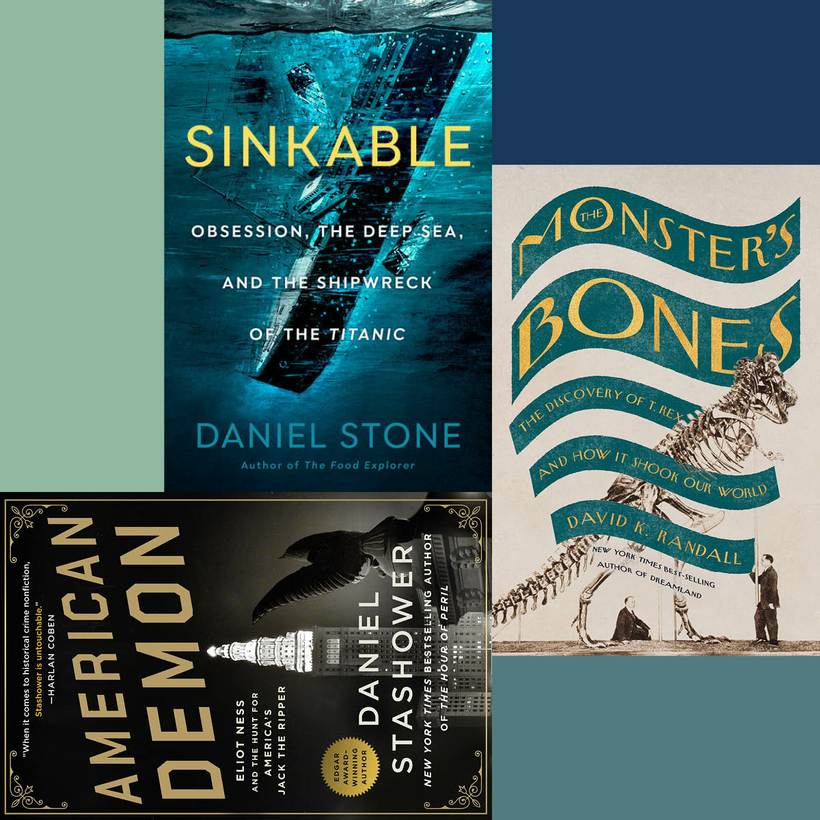There are disasters at sea, and then there is the Titanic. Why its 1912 sinking still grips our imagination is not hard to fathom: mix rich people and those in steerage, the maiden voyage of the world’s largest ocean liner billed as “unsinkable,” only a score of lifeboats, and an iceberg, and you have a story for the ages. And a story told many times before Daniel Stone’s book. But what distinguishes Sinkable from its predecessors (the best of those remains Walter Lord’s A Night to Remember) is the author’s focus on what happened to the Titanic after it sank, chronicling the misconceived plans to raise it (electromagnets, anyone?), to find it (this by a man who also tried to locate Noah’s ark), and to claim it as property. Stone’s curiosity is infectious and his delivery droll, which makes Sinkable a buoyant pleasure to read.
Benjamin Franklin knew many things, but he knew nothing about dinosaurs. Neither did Napoleon or Goethe or anyone who died before 1842, when an Englishman named Richard Owen coined the term to describe the fragments of bone that were being discovered around England. And it wasn’t until 1902, when an enterprising fossil hunter named Barnum Brown unearthed the first T. Rex specimen in the Montana wilderness, did the world begin to realize exactly what had roamed the earth more than 60 million years ago.
David K. Randall has written a cracking yarn, combining the tales of Barnum and his patron, Henry Fairfield Osborn. The wealthy son of a railroad executive, Osborn was keen on bringing paleontological treasures to the American Museum of Natural History, in New York. To this day, Tyrannosaurus rex dominates the museum’s collection, just as it did starting in 1915 when it was first unveiled on the museum’s fourth floor, in the only room that could contain its height and weight. The rest is history, changing forever the way we viewed our world’s past, and Randall does a magnificent job detailing the personal struggles that brought T. rex from beneath the earth of Montana to Central Park West.
Annals of true crime rarely are as good as American Demon, which features Eliot Ness (yes, the Ness who brought down Al Capone) and his efforts to solve a string of slayings in Cleveland in the mid-1930s. The serial murderer, dubbed “the Mad Butcher of Kingsbury Run,” sliced his 13 victims with surgical precision and drained them of blood, beheading some of them while they were still alive. Did Ness really solve the case, as he claimed, and was there really only one killer? No spoilers here, but only our strong recommendation: American Demon is worth seeking out and reading to reach your own conclusions.
Sinkable, The Monster’s Bones, and American Demon are available at your local independent bookstore, on Bookshop, and on Amazon

